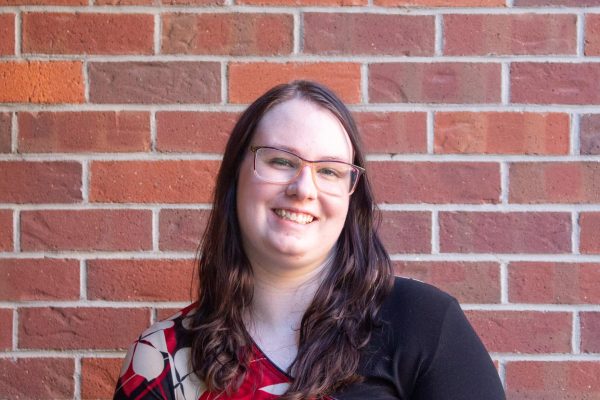“Terrifier 3” is the third installment of the “Terrifier” series. It takes place five years after the events of “Terrifier 2” and follows Sienna Shaw, one of two survivors of Art the Clown’s previous murderous rampage. As Christmas rolls around Sienna and her brother, Jonathan, finally try to put their traumatic experience behind them before matters are complicated by Art’s return.
He said
“Terrifier 3” is a horrifically violent film. This will come as no surprise to those familiar with the franchise but it’s something anyone interested should know going into the film.
Aside from its headlining gimmick of hyperviolence and grotesque gore the series has quite an interesting look to it. Art the Clown — played by David Howard Thorton — is similarly one of the most interesting horror characters. Art’s silent mime element gives him far more character than many traditional slasher antagonists.
“Terrifier 3” takes no time returning to form through its opening in which Art murders a family. While the rest of the film gets better this opening started it off on a bad foot for me as, while not explicitly depicted, Art murders a child.
This may seem a bizarre holdup for someone ultimately praising a series in which a woman is sawed in half with a hacksaw but the issue I take with this is more the way in which the film invokes the mutilation of children to play into its gimmick of hyperviolence.
Despite this it then backs down from outright depicting it in a way which seems to just cement how it’s such a disingenuous attempt at being shocking and gross.
This does however set the tone for the rest of the film which while I would argue does not top the previous film in terms of more disgusting kills; it does have a lot more of them.

What really stands out to me is the way in which it flirts with breaking the fourth wall. This is most interesting because of the film’s hypocritical critique of media violence. Since the second film, “Terrifier” has had a running motif which points out the desensitization to violence perpetuated in media; it is particularly critical of the “true crime” genre.
The third entry continues this motif with the presence of true crime fetishists in scenes that are almost comedy in the way they combine Art’s overexpression with the dramatic irony of the sequence.
While I wouldn’t classify “Terrifier 3” as a comedy akin to “Scream,” it has comic elements such as visual references to films like “The Shining,” and a sort of awareness of the audience.
Terrifier’s true statement about media violence is ultimately quite a muddled topic. However its contradictory approach to the topic is ultimately what makes it so interesting. It leaves the film open to interpretation.
Perhaps the franchise is a cultural litmus test to see just how desensitized audiences are; an effort to see how grotesque and depraved they can be before pop culture refuses to accept it.
Maybe the overstated and, at times, darkly comic violence is to make a distinct point about how true crime is infinitely more depraved than indulging in the disgusting but exaggerated violence in horror films.
Maybe I’m just thinking too hard about a dumb movie about a killer clown. Overall “Terrifier 3” fits in well with the series. And despite some confusing and obtuse lore which sets up a hell of a sequel, perhaps literally, it is a worthy Halloween watch in a year that seems pretty sparse for good horror, or good films generally.
Garrett Hartman can be reached at orionmanagingeditor@gmail.com.
She said
“Terrifer 3,” just like its predecessors, is disgustingly gory, but at this point, it’s just expected and has therefore lost its slasher film uniqueness … in some ways.
The film is definitely not meant for the faint hearted, but for those already familiar with the series, it doesn’t top the gorey charts, just expands upon the more inventive ways of killing an innocent person.
While this may not seem too different from the traditional slasher series such as “Friday the 13th” or “Texas Chainsaw Massacre,” the new installment sets itself apart in many ways from visual style to basic storyline.

The film follows Sienna — played by Lauren LaVera — five years after the events of “Terrifier 2,” when Art the Clown killed some of her friends and terrorized her and her brother Jonathan — played by Elliott Fullam.
For the holiday season Sienna takes some time away from a mental hospital to spend time with her aunt, uncle and adoring cousin.
This is the first sense of normalcy she’s had. However, she’s constantly discriminated against because she has severe PTSD from the horrific events she went through.
This normalcy doesn’t last long as she realizes Art the Clown is back.
One way “Terrifier 3” sets itself apart from most horror films is the opening scene.
Most slasher horror films are decent enough to avoid the desecration of children. However, “Terrifier 3” mildly steps past that line by off-screen implying the death of a young boy and then later showing his dismembered body … this is an example of why this is not meant for the light hearted.
Though, if it was going to cross that line, it should’ve completely gone over it, not just played with it.
In a lot of ways the film is centered around destroying innocence, for the characters and the audience.
To explain this, we need to hop in a time machine and head back to 2016 — the year “Terrifier” was released.
The original “Terrifier” film was an obvious critique on evolving technology, tech use and desensitization. It took a meta angle of critiquing these themes, itself and its audience by being over-the-top and exemplifying what it was critiquing.
The clearly-2000s cinematography, audio and horror film style throughout all three films really pushes this critique of technology use by showing the simpler times that Art the Clown seems to live in as he appears to detest technology.
“Terrifier 3” pushed the boundaries further by bringing a Santa Claus theme into the mix. Traditionally, Santa Claus is considered to be innocent and meant for children, but Art uses this mentality to inspire fear and wreak havoc.
The film also challenges the audience to evaluate their own levels of desensitization. It possibly shows that the people who walked out of “Terrifier 3” are more human, less desensitized and impacted by technology rather than the people who stuck it out.
I don’t know if I will ever watch this film again simply because of how disgusting it is — watching the first two films two times each was too much — but for anyone willing to brave the film, go for it.
Ariana Powell can be reached at orionmanagingeditor@gmail.com or alpowell1@csuchico.edu.







